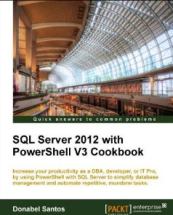This is an expansion (and slight variation) of Joe’s answer in StackOverflow regarding the thread Find the maximum consecutive years for each ID’s in a table (Oracle SQL) using SQL Server. I’ve tested this in SQL Server 2014, but should work from SQL Server 2005 onwards where the ranking functions are supported.
The problem Joe solved is not uncommon – i.e. how to get the consecutive years of something (consecutive year sales, consecutive years in school, consecutive years volunteering etc), and his solution is pretty clever.
Let’s assume you are working on a sales database. You have multiple clients who could be purchasing from your store several times a year, or a couple of times every five years. You may want to know what’s the maximum consecutive years they’ve purchased from you. Why? Perhaps in a marketing campaign, you may want to give your loyal customers (purchased in 5 or more consecutive years) a special discount.
Your data may look like the following screenshot. Notice that in this example, Client 00001, 00002 and 00003 purchased only once. Client 00004 purchased several times, and it looks like there were purchases in consecutive years.
See full article here at sqlbelle.com





